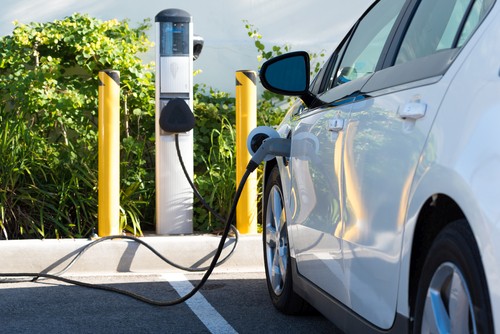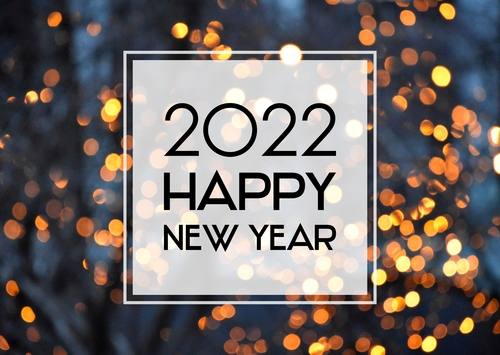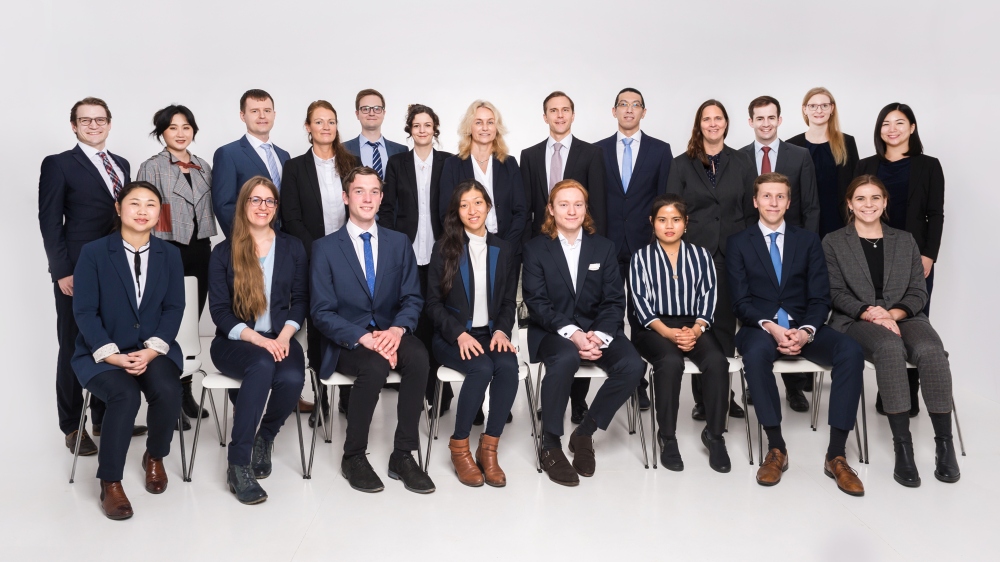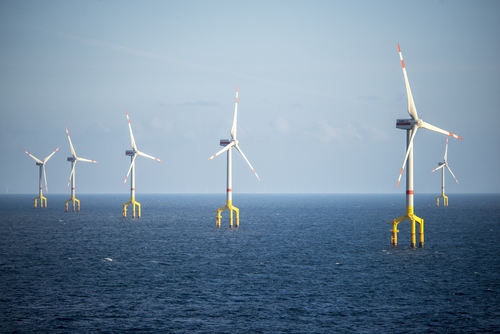Monthly sales figures of vehicles with alternative drive types exceed 320,000 units for the first time
Monthly sales figures in China of alternative drive vehicles continue to show robust growth in August. Alternative drive vehicles, also called NEVs (New Energy Vehicles) in China, include e-cars as well as plug-in hybrids. According to the Chinese Association of Automobile Manufacturers (CAAM), 321,000 units were sold in August. This represents an increase of 181.9 per cent over the same month last year and 18.6 per cent over the previous month of July. The figures are made up of 307,000 passenger cars and 14,000 commercial vehicles. Of all-electric passenger cars, 251,000 were sold in August, an increase of 198.2 per cent over the same month last year and 21.8 per cent more than in July. Plug-in hybrid vehicles sold 56,000 times in August, up 55.8 per cent from the identical period in 2020 and 11.7 per cent from July. NEV commercial vehicles accounted for 14,200 units, up 55.8 per cent from the same month last year. However, this included only 200 plug-in hybrids. Components for the production of NEV vehicles largely require CCC certification before they can be imported, traded or used on the Chinese market.

China’s production of NEVs totalled 309,000 units in August, up 180.6 per cent from the same period last year. About 1.79 million NEVs were sold in China in the first eight months of 2021, an increase of 194 per cent over the same period in 2020. Exports of vehicles from China also rose to a new record of 187,000 units in August, or an increase of 161.9 per cent year-on-year. Among the exported vehicles were 46,000 NEVs, which increased sevenfold compared to the same month last year.
However, overall vehicle sales in China fell 17.8 per cent in August to 1.79 million units, down 3.5 per cent from July. Production was down 18.7 per cent to 1.72 million units, 7.4 per cent less than in July. The CAAM attributed the decline to supply chain disruptions due to continued Covid 19 restrictions in China and Malaysia. Many automakers in China have had to cut back production due to a lack of parts and components. The market share of NEVs in China averaged 11 per cent for the current year, according to CAAM data. The output of automotive batteries for NEVs used in August was 12.6 GWh, up 114.9 per cent from the same month last year and 11.2 per cent more than in July.
Vehicles and components must be awarded a CCC certificate in order for the products to be exported to China or manufactured locally. CCC certification is a complex project that requires professional support at all stages. For several years, MPR China Certification GmbH has been entrusted with large CCC projects for the vehicle manufacturers Lotus, Tesla and Bugatti. We will be pleased to provide you with non-binding advice on the scope and requirements of a China CCC certification.
For more information on how CCC certification, the CCC Self-Declaration and voluntary CCAP or CQC certification may affect your company, or for more information about CCC certification in general, the process, and the associated costs, please visit our website and our News Section where you will find current updates twice a week.
Please do not hesitate to contact us for further details and consultation. You can contact us via e-mail, or call us (UK: +44 2071931135, Rest of Europe: +49 69 2713769150, US: +1 773 654-2673).
Please don’t hesitate to also use our chat-window in the bottom right corner if you have any questions. (Please check your browser settings if you can’t see the window)
You can also check out our free CCC-Brochure, which can be downloaded right here as a PDF file or you consult our book (in English) “A Brief Guide to CCC: China Compulsory Certification”, which can be found directly here on Amazon.
Here you can download our brochure about the CCC Self-Declaration.
Here you can download our brochure about the voluntary CCAP or CQC certification.
Chinese Authorities Closed During New Year
The Chinese authorities and certification institutions will be closed for the New Year Holidays.
The New Year holidays will be from December 31, 2021 to January 01, 2022. This year, the New Year’s Eve falls on a weekend, so the authorities will resume their work from 03 January 2022.
Due to the closing delays in the certification process may occur.
In China, New Year’s Eve is celebrated more quietly in comparison to the Chinese New Year celebrations. The Chinese New Year is also known as Spring Festival and is considered as the most important celebration in China.
The Chinese New Year’s Day which is calculated according to the Chinese lunar calendar and will start in beginning of February for 2022. We will inform you about the exact days when the authorities will close for the Spring Festival when we get the official notice.

MPR China Certification GmbH will continue to support you in your certification processes. If you would like to have products checked for CCC you can call or email us any time.
For more information on how CCC certification, the CCC Self-Declaration and voluntary CCAP or CQC certification may affect your company, or for more information about CCC certification in general, the process, and the associated costs, please visit our website and our News Section where you will find current updates twice a week.
Please do not hesitate to contact us for further details and consultation. You can contact us via e-mail, or call us (UK: +44 2071931135, Rest of Europe: +49 69 2713769150, US: +1 773 654-2673).
Please don’t hesitate to also use our chat-window in the bottom right corner if you have any questions. (Please check your browser settings if you can’t see the window)
MPR China Certification GmbH wishes you a succesfull New Year 2022!
Successful Conclusion of 2021
The MPR Group looks back on an extremely successful 2021, even with the ongoing Covid-19 challenges. Many of our clients had to deal with delivery bottlenecks, high shipping costs and material shortages. Looking back, we can say that our clients overcame these hurdles very professionally and were still able to complete all projects successfully. Thanks to our clients and our motivated staff working hand in hand, there were no critical delays in our certification projects.
Our direct contacts within the certification authorities and testing laboratories in Asia have allowed us to continue to offer expedited services and certification completions comparable to pre-pandemic times. The pandemic changed the certification process due to travel restrictions, temporary shutdowns and customs delays. Fortunately, we were able to work with our clients, the test labs and the certification authorities to adapt and coordinate alternative methods and processes to meet our clients’ crucial deadlines. In many cases, the factory audits were carried out remotely and the exchange of information with the test laboratories was adjusted accordingly.
From the beginning of the pandemic MPR Group hired additional staff, invested in IT infrastructure, implemented remote work from home and mapped out alternative plans to optimize capacities for the additional workload of the new processes of certifications. The planning paid off and allowed us to offer our clients the efficient, seamless process they have come to expect from us. The consistent switch to working from home and the implementation of technical systems required for this were implemented very quickly and has proven successful. All certification projects are accompanied by an individual contact person who is replaced by a permanent representative in case of absence. This guarantees our clients continuous availability and a consistently high quality of service.
We are very happy that in the end we did not get into the situation of having to carry out any substitutions due to illness, and that our masking, safe-distance and hygiene measures worked well, and we did not have a single Covid-19 infection transmitted among colleagues during the entire pandemic.
In the meantime, our employees were able to take advantage of the vaccination and everyone in our offices is fully vaccinated or recovered from Covid-19.
The MPR Group wishes all employees, clients, family and suppliers a relaxing holiday season and a great start into the new year!
New Announcement TC11-2021-01 for the automotive sector in China.
In order to ensure the effective and proper implementation of China’s compulsory certification (CCC certification) in the automotive sector, the TC11 technical expert group published TC11-2021-01, the revision of the safety regulations for the operation of motor vehicles, on November 26, 2021. The publication concerns how to deal with the renewal of GB standards for products that have already been certified.
- Standards for product certification of complete vehicles and vehicle components have been revised in accordance with the ” Announcement about the relevant requirements for revision of the compulsory product certification standards ” (CNCA Notice No. 4 of 2012) (see Annex 1 below).
For new applications, the requirements during the transition period between standard implementation dates are explained:
- If there are no new testable parts, already certified products do not need to be retested, new versions of the certificates can be issued directly. For new parts subject to testing, appropriate tests must be performed before new certificates can be issued.
- For products already certified before the implementation of the new standards, which are already in market circulation but are end-of-production, new certification according to the new standard is not necessary.
- Certificates of products affected by new standards can be used for up to one year after publication of the revision of the technical safety regulations. If products are produced within the transition period, the certificates must be renewed according to the implementation dates specified in the new standards.
- If the implementation deadline cannot be met, consequences will follow for corresponding certificates according to the “Compulsory Product Certification Management Regulations”.
- New standards for mandatory certifications have been added.
- The new and revised standards will be implemented and enforced by the certification bodies after they have been submitted to the Commission for information.
Affected companies should immediately check whether the products they manufacture are affected by revisions or new standard requirements and, if so, update the relevant standards on their certificates.
Please do not hesitate to contact us for further details and consultation. You can contact us via e-mail, or call us (UK: +44 2071931135, Rest of Europe: +49 69 2713769150, US: +1 773 654-2673).
Please don’t hesitate to also use our chat-window in the bottom right corner if you have any questions. (Please check your browser settings if you can’t see the window)
You can also check out our free CCC-Brochure, which can be downloaded right here as a PDF file or you consult our book (in English) “A Brief Guide to CCC: China Compulsory Certification”, which can be found directly here on Amazon.
Here you can download our brochure about the CCC Self-Declaration.
Here you can download our brochure about the voluntary CCAP or CQC certification.
Annex 1: List of new revised standards
| Standard No. (new and old) | Standard Name | Release Date – Implementation Date | Implementation Time | Test Requirements | Implementation Requirements |
| New: GB 17675 -2021Old: GB 17675 1999 | Steering system of motor vehicles – Basic requirements | 2021-02-20 – 2022 -01-01 | Type approval applications for new models should use the new standard starting with the implementation date; Already certified models should change to the new standard by the 13th month after the implementation date. | Full test according to the new standard | New applications must use the new Standard starting January 1, 2022, onwards. Certified models need to change to the new Standard by the 13th month after the implementation date. Appendix B will not be implemented for the time being. |
| New: GB 26512 -2021Old: GB 26512-2011 | The Protection of the Occupants of the Cab of a Commercial Vehicle | 2021-02-20 – 2022 -01-01 | Type approval applications for new models should use the new standard starting with the implementation date; Already certified models should change to the new standard by the 13th month after the implementation date. | For NI and the total mass of less than or equal to 7500Kg of N2 vehicles, no difference test: for the total mass of 7500kg or more heart class and N3 vehicles need to perform frontal impact test, A-pillar impact test, dynamic preload test a cab side pendulum 20 ° impact test, which required by the new standard | New applications must use the new Standard starting January 1, 2022, onwards. Certified models need to change to the new Standard by the 13th month after the implementation date. Appendix B will not be implemented for the time being. |
| New: GB/T 18386. 1-2021Old: GB/T 18386-2017 | Electric Vehicles – Energy Consumption and Range – Test Procedures Part 1: Light vehicles | 2021-03-09 – 2021-10-01 | – | Full test according to the new standard | New applications must use the new Standard starting with the publication of this technical resolution, onwards. Certified models need to change to the new Standard by the 13th month after the publication of this technical resolution. Appendix A. Appendix B is temporarily suspended. |
| New: GB/T 19753-2021Old: GB/T 19753 -2013 | Test methods for energy consumption of light-duty hybrid electric vehicles | 2021-03-09 – 2021-10-01 | – | Full test according to the new standard | New applications must use the new Standard starting with the publication of this technical resolution, onwards. Certified models need to change to the new Standard by the 13th month after the publication of this technical resolution. Appendix A. Appendix B is temporarily suspended. |
| New: GB/T 24549-2020Old: GB/T 24549-2009 | Fuel Cell Electric Vehicles – Safety Requirements | 2021-09-29 – 2021-04-01 | – | Full test according to the new standard | New applications must use the new Standard starting with the publication of this technical resolution, onwards. Certified models need to change to the new Standard by the 13th month after the publication of this technical resolution. Appendix A. Appendix B is temporarily suspended. |
| New: GB/T 26779-2021Old: GB/T 26779 -2011 | Hydrogen fuel cell electric vehicle refueling receptacle | 2021-03-09 – 2021-10-01 | – | Full test according to the new standard | New applications must use the new Standard starting with the publication of this technical resolution, onwards. Certified models need to change to the new Standard by the 13th month after the publication of this technical resolution. Appendix A. Appendix B is temporarily suspended. |
| New: GB 7258-2017Old: – | Technical specifications for safety of power-driven vehicles operating on roads-Revision No. 2 | 2021-02-20 – 2021-02-20 | From January 1, 2022, it will be implemented for newly produced cars. | Check according to §8.6.6 of the standard | For new applications, from January 1, 2022, onwards. |
| New: GB 20300 -2018Old: – | Safety specifications for road transportation vehicle of explosive substance and chemical toxic substance – Revision No. 1 | 2020-07-23 – 2020-07-23 | – | No difference test | New applications must use the new Standard starting with the publication of this technical resolution, onwards. Certified models need to change to the new Standard by the 13th month after the publication of this technical resolution. Appendix A. Appendix B is temporarily suspended. |
| New: GB 30509-2014Old: – | Identification for passenger cars and their parts-Revision No. 1 | 2020-07-23 – 2020-07-23 | Article 1 will take effect on July 23, 2020, and Article 2 on January 1, 2021 | Check according to §5.1 of the standard | New applications must use the new Standard starting with the publication of this technical resolution, onwards. Certified models need to change to the new Standard by the 13th month after the publication of this technical resolution. Appendix A. Appendix B is temporarily suspended. |
| New: GB/T 26990-2011Old: – | Fuel cell electric vehicles – Onboard hydrogen system – Specifications-Revision No. 1 | 2020-07-21 – 2020-07-21 | – | Check according to §4.2.6 of the standard | New applications must use the new Standard starting with the publication of this technical resolution, onwards. Certified models need to change to the new Standard by the 13th month after the publication of this technical resolution. Appendix A. Appendix B is temporarily suspended. |
| New: GB/T 29126-2012Old: – | Fuel cell electric vehicles – Onboard hydrogen system – Test methods – Revision No. 1 | 2020-07-21 – 2020-07-21 | – | Check according to §6.1.1.5 of the standard | New applications must use the new Standard starting with the publication of this technical resolution, onwards. Certified models need to change to the new Standard by the 13th month after the publication of this technical resolution. Appendix A. Appendix B is temporarily suspended. |
| New: GB/T 35544-2017Old: – | Fully-wrapped carbon fiber reinforced cylinders with an aluminum liner for the on-board storage of compressed hydrogen as a fuel for land vehicles- Revision No. 1 | 2020-4-28 – 2020-4-28 | – | No difference test | New applications must use the new Standard starting with the publication of this technical resolution, onwards. |
| New: GB9656-2021Old: GB9656 -2003 | Safety technical specification for glazing materials used in power-driven vehicles | 2021-04-30 – 2023-01-01 | – | The difference test shall be carried out according to the relevant technical resolution of TC13 Safety glass Technical Group. Automotive vehicles directly recognize the results of compulsory product certification (self-declaration) of motor vehicle glass products; The difference test of vehicle glass products shall be carried out according to the relevant technical resolution of TC13 Safety Glass Technical Expert Group. | New applications must use the new Standard starting January 1, 2022, onwards. Certified models need to change to the new Standard by the 13th month after the implementation date. |
First wind turbines of the Shandong Peninsula South 4 wind farm go online
The first wind turbines of the Shandong Peninsula South 4 wind farm were recently connected to the power grid and began generating electricity, China Daily reported in mid-September. The wind farm is thus the first commercial offshore wind power generation project in the coastal province of Shandong, south of Beijing. There are 58 wind turbines in the entire wind farm, and the complete connection of all wind turbines is to be completed by the end of this year. Most products used for wind turbine production in China require CCC certification (the CCC certificate was introduced in 2002 and applies to both imported and Chinese products).
The annual output generated will then be up to 820 kilowatt hours of emission-free energy and cover the electricity needs of up to 300,000 households. In total, the wind farm has a capacity of 300 megawatts and is the first section of offshore wind turbines to test this technology in the eastern Chinese province of Shandong. The energy generated replaces the combustion of 253,000 tonnes of coal and saves 560,000 tonnes of CO₂. By planning and commissioning wind farms, the Chinese government is pursuing the goal of a greener economy with emissions peaking by 2030 and CO2 neutrality by 2060.
The list of CCC mandatory product groups is constantly expanding and, depending on the category, a mandatory certification China Compulsory Certificate or, since 2019, a CCC Self-Declaration or voluntary certification must be obtained. The CCC certificate was introduced in 2002 and applies to both imported and Chinese products. CCC stands for China Compulsory Certificate. The Chinese CCC is comparable to other certifications for standardising product quality, such as the European CE system, but there are important differences. We will be pleased to advise you without obligation about the scope and requirements of a China CCC certification.
For more information on how CCC certification, the CCC Self-Declaration and voluntary CCAP or CQC certification may affect your company, or for more information about CCC certification in general, the process, and the associated costs, please visit our website and our News Section where you will find current updates twice a week.
Please do not hesitate to contact us for further details and consultation. You can contact us via e-mail, or call us (UK: +44 2071931135, Rest of Europe: +49 69 2713769150, US: +1 773 654-2673).
Please don’t hesitate to also use our chat-window in the bottom right corner if you have any questions. (Please check your browser settings if you can’t see the window)
You can also check out our free CCC-Brochure, which can be downloaded right here as a PDF file or you consult our book (in English) “A Brief Guide to CCC: China Compulsory Certification”, which can be found directly here on Amazon.
Here you can download our brochure about the CCC Self-Declaration.
Here you can download our brochure about the voluntary CCAP or CQC certification.





